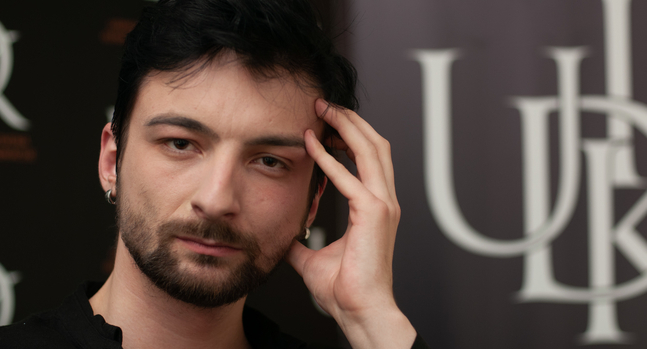Dissatisfied with poor working conditions and low salaries, female employees in the clothes and textile industry in New York took to the streets on March 08, 1857. In the coming years, demonstrations continued on the same date. Five decades later, in 1910, the first International Women’s Conference was held in Copenhagen. It was organised by the Socialist International. The International Women’s Day was introduced at the proposal of the German activist Clara Zetkin.[1]
March 8 is celebrated in Bosnia and Herzegovina as well. The first celebration was organised in 1913. Around two thousand women gathered in Sarajevo to celebrate this day.[2] Over time, women successfully fought for their rights. However, the desired level of gender equality has not yet been achieved. Women are nevertheless courageously trying to use the past to their advantage. Hundred years later, an initiative entitled Peace with a Woman’s Face was launched in our country as an answer to the exclusion of women from the official culture of remembrance and transitional justice.
”New generations are coming all the time and we are learning all the time. Women have to know how they achieved their current position, how they got their right of vote, what they can do… what women in Bosnia and Herzegovina can initiate, what we have in common”, says Dubravka Kovačević, a member of the initiative Peace with a Woman’s Face.[3]
According to data from the Bosnian Book of the Dead,[4] 9,901 women were killed in the war against Bosnia and Herzegovina. That constitutes 9% of the total number of persons killed in the war and also 25% of civilian victims of war. These data can rarely be found on monuments. Family members or close friends are the ones preserving the remembrance of women killed during the war.[5]
Advocates of women’s rights from thirteen Bosnian and Herzegovinian NGOs initiated several memorialisation actions. One of them is also marking of December 08 – the Day of Remembrance of Women Killed in the War against Bosnia and Herzegovina.
”What happened in 1990s is still not part of our history archives or textbooks”, the coordinator of the initiative, Radmila Žigić, says. ”We still haven’t reached an agreement as to what kind of war we have had – some believe that it was a civil war, whereas others believe that it was an aggression against Bosnia and Herzegovina by Serbia or Croatia”.[6]
”My house was razed to the ground, the only thing left was the key’’, Rejha Avdić from Bratunac says. She has kept and still has that part of her home that she was forced to leave in 1992. ”There is also a family photo that my husband’s family somehow managed to preserve. A photo showing my husband, my daughters Sejdefa and Sabina and I…”[7]
December 8 was marked last year in twelve cities as part of the annual global campaign Sixteen Days of Activism against Gender-based Violence. Street actions were organised in Sarajevo, Banja Luka, Bijeljina, Modriča, Bihać, Višegrad, Mostar and Bosansko Grahovo. Promotional materials were distributed to passers-by. Activists in Prijedor held posters with names and age of killed women.[8] In Zenica, there was an installation entitled Day of Remembrance. Discussions were held with citizens at the market in Bratunac.[9] A film entitled They are dying for a second time was screened at the library Derviš Sušić in Tuzla.[10]
Initiatives to make December 8 the official Day of Remembrance of Women Killed in the War against Bosnia and Herzegovina were sent to the Parliament twice. In 2014 and in 2016. However, they have not yet been endorsed by a sufficient number of MPs.[11]
Obtaining support for their efforts would mean overcoming barriers. Invisible borders of violence that divide citizens into two entities and three ethnic peoples and give them the exclusive right to call the other side the eternal culprit for their present, and especially their past.
”When you come back to your home after you had been persecuted and you see that there is nothing left, then you have nothing. I have seen the emotions, I have recorded such emotions and I am now sharing them with these people after such a long time, I restore hope and tell them: See, you have survived!”, says Danka Zelić from Bosansko Grahovo and adds, ”It was difficult, but you have made it! You have rebuilt your home, you have your family back, everything turned out fine somehow!”
The Day of Remembrance of Women Killed in the War against Bosnia and Herzegovina is gradually erasing the story about war heroes from our peoples. All myths of war heroes become absurd, because once they are mentioned, it is impossible not to remember their victims. Women are the most visible evidence of war crimes. They were victims also during the lifetime of Clara Zetkin. It required effort, work, will, means and cooperation, and in particular faith in order to undo the injustice done to them. For this reason, it is worthwhile to support the initiative that aims, among other things, to show women not as victims, but as initiators of peace processes and reconstruction of our communities. Victims that were burned alive in Pionirska street in Višegrad and in Bikavac were mostly women. Women were raped in Foča, Višegrad, Brčko, Zvornik. They were detained in Omarska, Keraterm and Trnopolje. They were killed in Grabovica, Sarajevo, Bijeljina, Mostar. Don’t you think that dignified payback through culture of remembrance is in order?
Edvin Kanka Ćudić (1988) is a Bosnian and Herzegovinian human rights activist who is best known as the leader of the Association for Social Research and Communications (UDIK), an organisation fighting for human rights and reconciliation in the former Yugoslavia.




